How to Make Salmon Like a Pro
Salmon is considered one of the most nutritious foods, due to its high levels of omega-3 fatty acids, high-quality protein, B vitamins, potassium, and other nutrients. However, if you want to master cooking it, you should follow these tips and tricks that the 5-Minute Crafts team is happy to share with you.
Anatomy of a salmon fillet
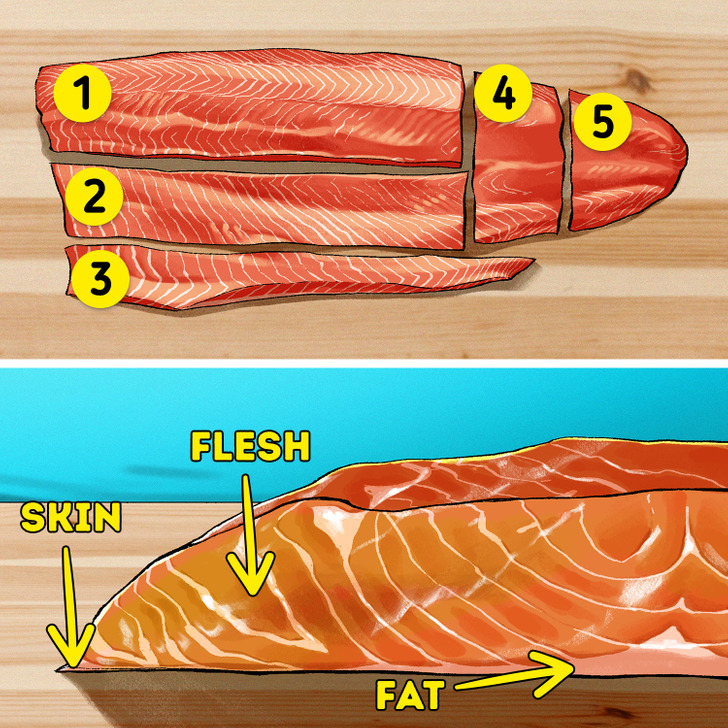
These are the parts of the salmon meat:
- Top loin
- Loin
- Belly
- Second cut
- Tail
The most high-quality piece of salmon meat is the top loin and it is perfect for all cooking styles.
Let’s take a look at the parts of a salmon fillet:
- Skin
- A layer of fat underneath the skin
- Flesh (the color ranges from pale orange to red)
1. Dry the fillets
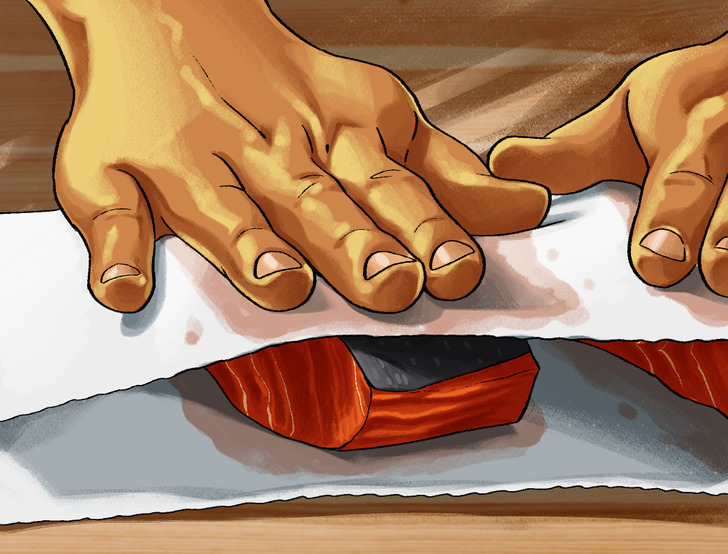
The salmon meat should be as dry as possible before it is put into the pan. Humidity makes oil cool down because energy goes toward evaporating excess moisture. While preparing your salmon fillet, you want the oil to heat up both the skin and the flesh underneath. Dry them before cooking them by pressing them between paper towels to avoid this from happening.
2. Preheat the oil and then reduce the heat
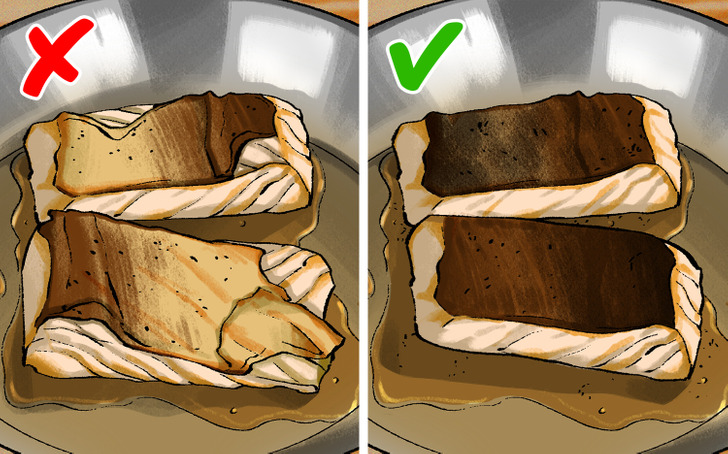
Salmon sticks to the pan when the oil isn’t hot enough. You will prevent the skin from sticking to the metal if you make it heat up quickly.
Preheat the oil in the frying pan and then reduce the heat as soon as you add the salmon to the preheated pan. This way the proteins will tighten up immediately and you will be able to flip the salmon fillet easily at the end. Besides that, you want your salmon meat evenly cooked and the skin to brown, so it gets crisp and crunchy.
3. Hold the fillets with a metal spatula
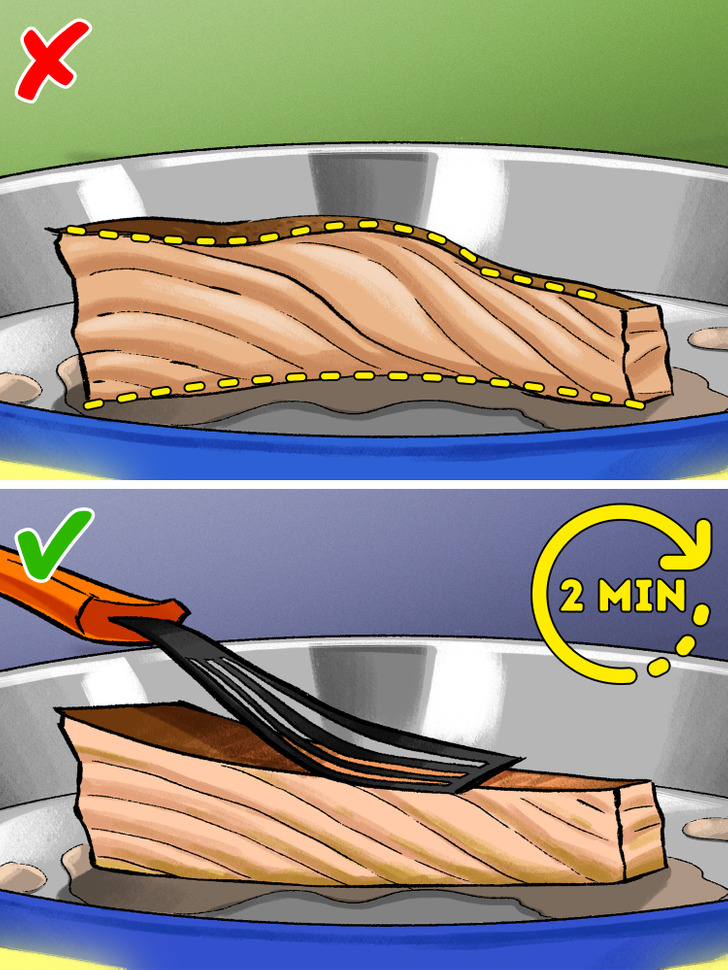
Salmon skin shrinks when it comes into contact with hot oil. To avoid the curling up of the skin and the fillet in general and prevent the uneven cooking of your salmon, it is essential to hold the fillets in place with a metal fish spatula for a couple of minutes.
4. Cook your salmon skin side down
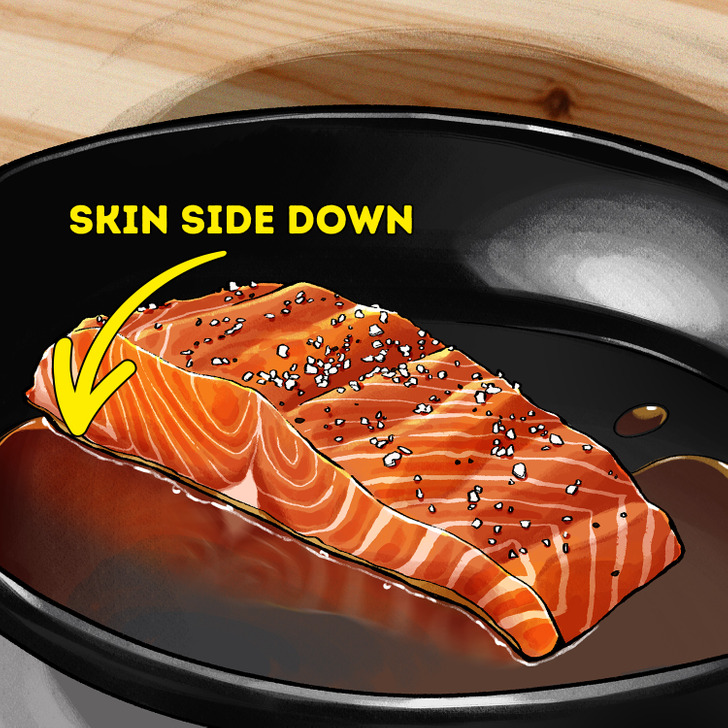
This hack works well even if you want skinless fillets.
The fat transfers the heat from the skin to the flesh quite slowly. This is why you should always put your salmon skin side down and cook it like this almost entirely, in order to prevent overcooking. The unilateral (that is, skin-side down), slow, and steady cooking is the perfect method for getting evenly cooked salmon meat and crispy skin.
5. Flip it for only 15 seconds
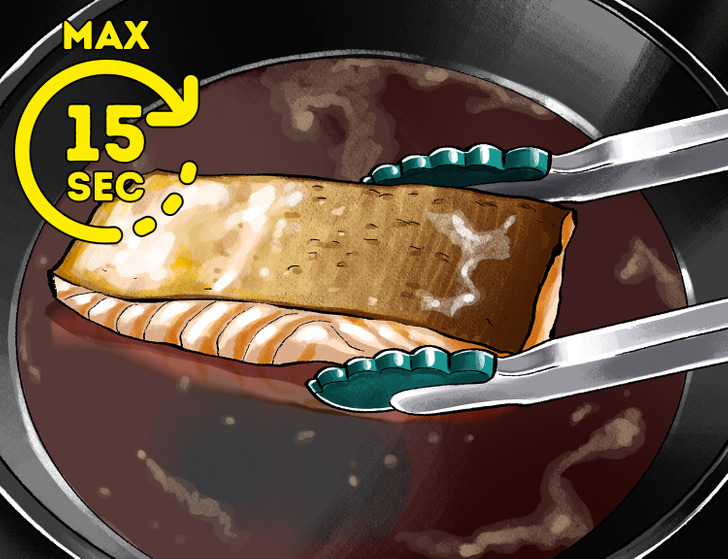
Do not be in a hurry to flip the meat. Use your spatula to check and see if the fillet skin can be easily detached from the pan. If so, you know it is time to flip it to the other side. When you do flip it, make sure the other side doesn’t cook for more than 15 seconds. Remember, your salmon has already been cooked through on the skin-side, so you just need to firm up the other one by letting it touch the oil for a couple of seconds. This way you prevent the drying out of the meat and allow it to stay tender and medium-rare.
6. Use an instant-read thermometer to check its temperature
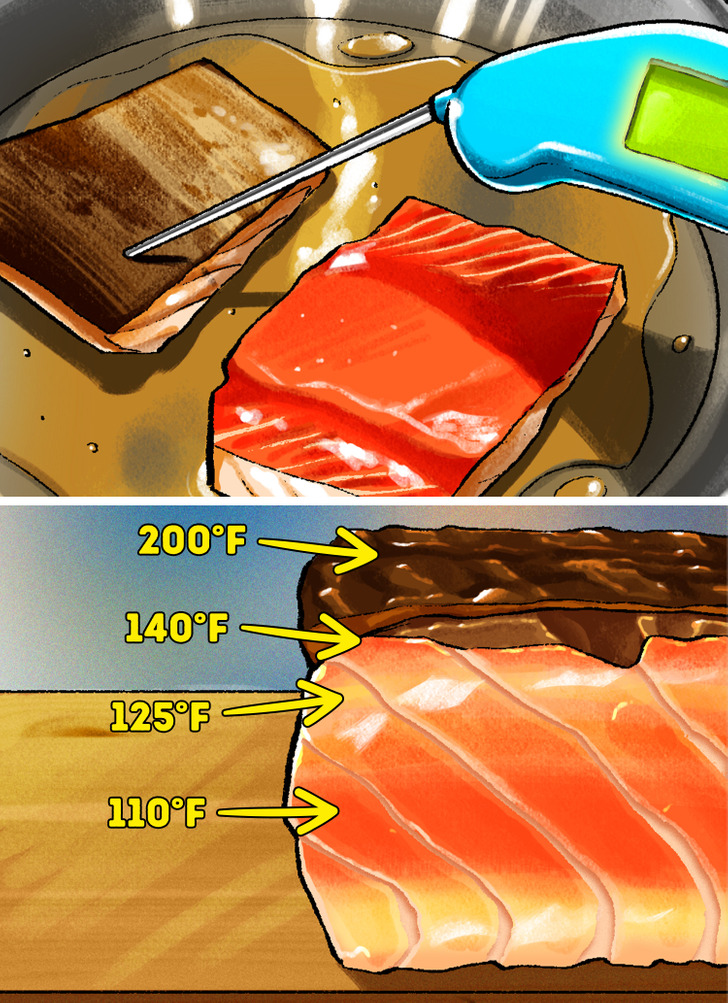
There’s a bit more to it than just getting a well-done piece of salmon because, ideally, you want crisp skin and soft meat. To make this happen, the inside of your salmon should be cooked to the perfect temperature. You can use a cooking thermometer to measure it. Let’s take a look at what your salmon meat will be like according to the temperature it is cooked at:
- up to 110°F: raw flesh (for sashimi, for example)
- 110°-125°F: medium-rare
- 125°-140°F: medium to well-done
- 140°F: overdone, meaning it’ll be chalky and dry
Ideally, you’ll aim at keeping the temperature closer to 125°F and, in any case, always below 140°F if you really want medium to well-done salmon meat. By doing so, other parts of the fillet will have the temperature indicated in the illustration above, meaning you’ll obtain a skin that’s brown, salty, and crisp, with meat underneath that is a tiny bit flaky. Then you’ll have juicy and tender flesh below and a creamy sashimi-like meat in the center part.
6. Feel free to experiment with seasoning
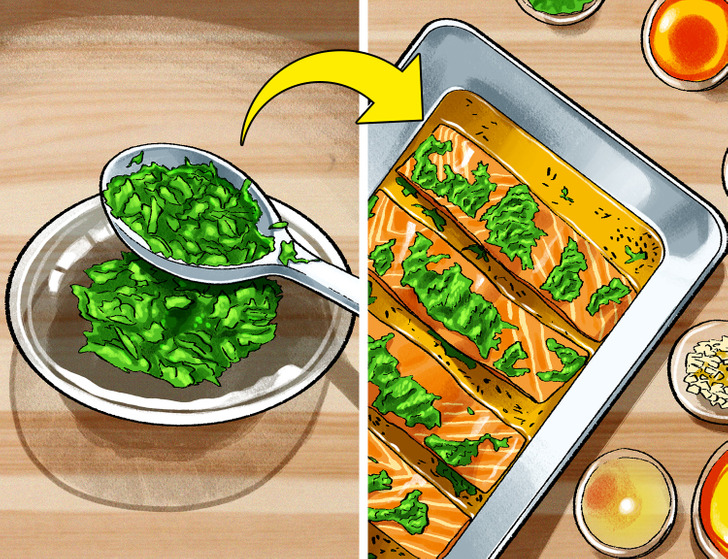
Seasoning a salmon fillet doesn’t require much work. You can do it very simply in the following ways:
- Herbs. Use any herb you’ve got in your kitchen and mix it with a little oil and lemon juice to bring a fresh flavor to your salmon.
- Breadcrumbs. Coat the salmon fillet with breadcrumbs. You can brush the salmon fillet with a mixture of some mayonnaise or mustard and then coat it with fresh breadcrumbs. Then fry or bake your salmon until it gets golden brown.
- Butter and lemon zest. Mix some butter with lemon zest and coat the fillet after it is cooked.
- Marinade or glaze. Feel free to mix the condiments you have. You can add some sugar in your glaze or marinade and brush the fillet with it while it is cooking, to make it more caramelized.